
There are already well over 100 models of electric car available to buy in the UK, and that number is going up all the time. As manufacturers work hard to meet a government mandate requiring 22 per cent of all new car sales to be electric this year – increasing to 28 per cent in 2025 and 52 per cent by 2028 – new models are landing all the time.
What’s more, prices are falling. Electric cars are no longer restricted to the luxury end of the market, and while you can still spend six figures on an EV, there are genuinely affordable, sub-£20,000 electric cars like the Dacia Spring to consider. In the coming months we’ll see more small EVs go on sale, in the shape of the retro-styled Renault 5 and its sporty sibling the Alpine A290.
We’re also looking forward to the launch of the first all-electric Range Rover, which is due on sale soon, and a whole new family of electric cars from Jaguar due to hit the market in 2026. EVs just over the horizon include the Polestar 4, the Alfa Romeo Junior, the Kia EV3 and the highly-anticipated Tesla Model Q.
Below we’ve rounded up over 20 of the most important new electric cars coming to market in the next few months. This article will be updated regularly to keep track of future electric cars, and include our reviews as soon as we’ve got behind the wheel.
Abarth 600e

Abarth has a long history of adding a bit of flare to the far humbler offerings of its sibling, Fiat. The company turns 75 this year, and as part of the celebrations it’ll release its second all-electric car. Based on the Fiat 600e, the Abarth 600e is a sporty electric crossover with the Ford Puma ST in its sights.
The Abarth 600e will send 237 bhp to its front axle with a single electric motor, making it considerably more powerful than the 153 bhp Fiat on which it’s based. It’s likely to have the same 51 kWh battery as the Fiat, so we can expect its range to be a little lower than the 252 miles of the standard 600e. Other known hardware details include a limited-slip differential and a set of performance tyres.
As with the Abarth 500e, the 600e will have an external sound generator to remind passers-by that, no, it really isn’t just a Fiat. Thankfully, Abarth says the sound effects will be easier to switch off than in the 500e, which had the off switch buried in a submenu.
Alpine A110 EV
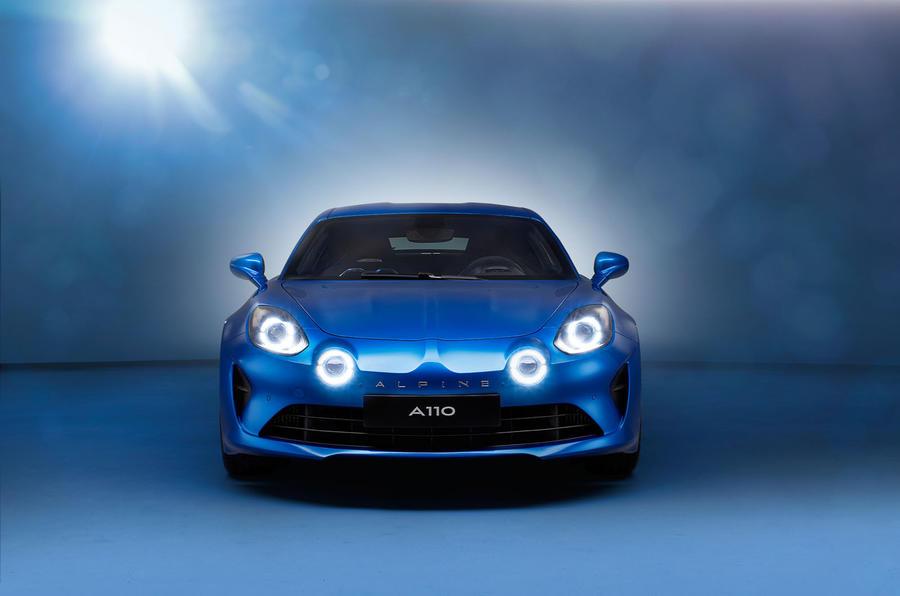
An electric successor to the Alpine A110 sports car is due in 2026. It is expected to be a clear descendant of the current A110, which itself is a revival of a of the 1960’s French sports car of the same name. But, echoing the rest of the Alpine brand, it will be all-electric.
A distinctive four-light arrangement at the front is expected to remain, since it also appears on the face of the electric Alpine A290, and there will undoubtedly be a focus on lightweight athleticism. But little else is known for now about a car that will likely compete against the upcoming electric Porsche Cayman, and a reborn electric Toyota MR2, known as the FT-Se.
Audi A6 e-tron

Audi’s electric e-tron family will soon gain a couple of new members, in the form of the A6 and sportier S6, with both offered as a saloon or an estate. The cars will use the same platform as the Audi Q6 e-tron and Porsche Macan, which means a large, 100 kWh battery and 800-volt architecture.
Expected to be priced from around £55,000 to north of £80,000, the A6 promises a huge range of 435 miles and charging speeds of up to 270 kW – so if you can find an equally powerful charger, it should fill its battery from 10 to 80 percent in 20 minutes. The A6 range starts with a single-motor, rear-drive model with 362 bhp, which Audi says will deliver a 0-62 mph time of 5.4 seconds.
The quicker S6 gains a second motor for all-wheel-drive, a total output of over 540 bhp, and a 0-62 mph time of just under four seconds.
Bentley

We don’t know what it will be called yet, but we know Bentley plans to reveal its first all-electric car in 2026. Described as a Luxury Urban SUV, the car will be built in Britain and is scheduled to go on sale in 2027, a year after it is revealed.
A simple line drawing published by Bentley doesn’t give much away, but it suggests the car will look fairly similar to the company’s current Bentayga SUV, which is available as a plug-in hybrid. At the same time, Bentley has chosen to push back its timeline for becoming a fully-electric car company, from 2030 to 2035.
Bentley boss Frank-Steffen Walliser recently said Bentley is creating its first EV partly due to legislative demands rather than customer demand, saying that there was not a lot of demand from today’s Bentley customers and the brand hoped the new car would attract new customers.
BMW ‘Neue Klasse’
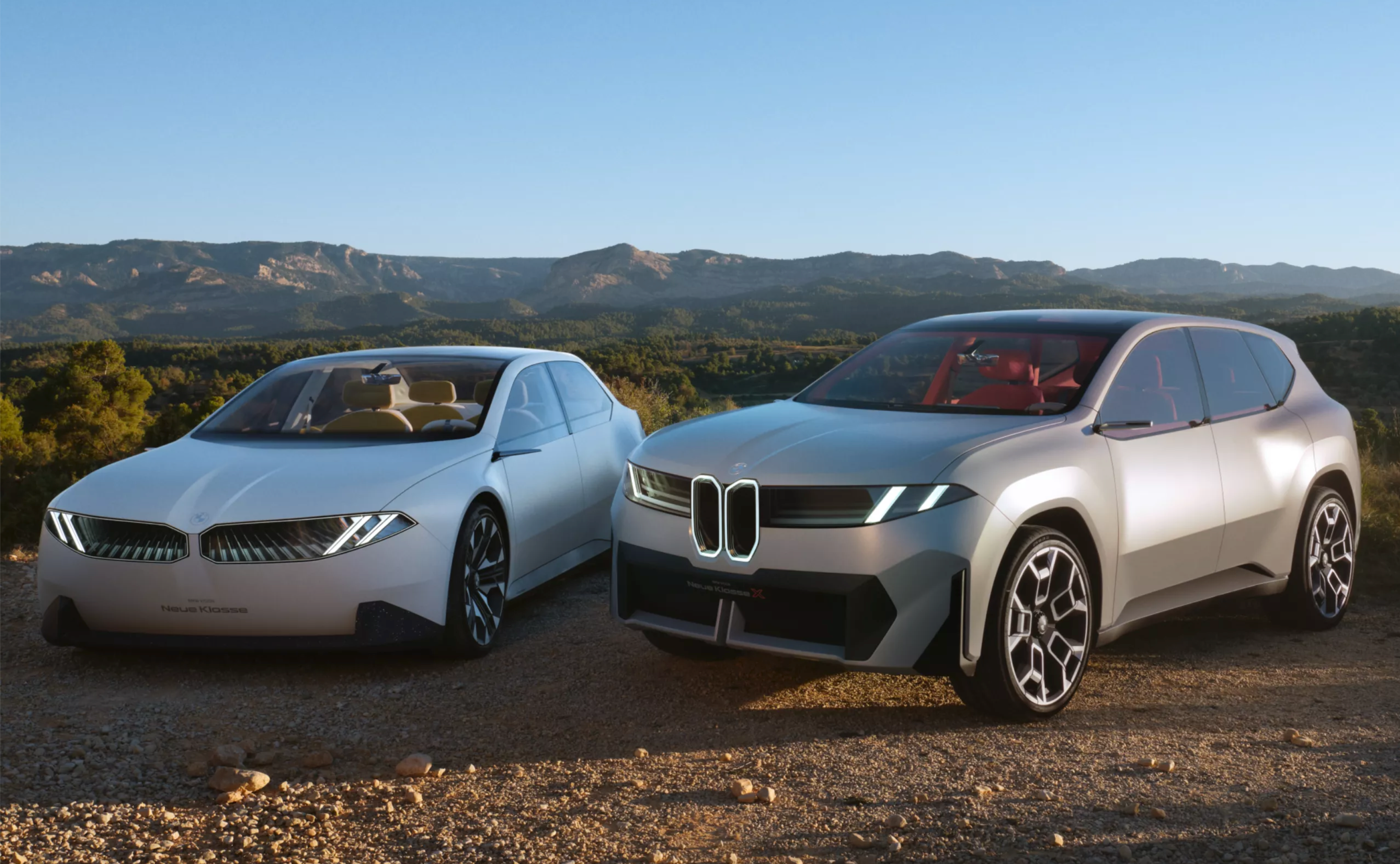
Although still concept cars for now, BMW’s so-called Neue Klasse and larger Neue Klasse X are a pair of electric cars to get excited about. The former is expected to become a saloon car the same size as the 3-Series, while the X will, predictable, become an SUV.
We have high hopes. BMW has described its upcoming Neue Klasse family as the biggest single investment in the company’s history, and that the upcoming cars will redefine the German brand for an all-electric future. These cars are expected to use a fast-charging 800-volt electrical system, with three battery size options of 75, 90 and 105 kWh. Mercifully, the cars should offer a cleaner, simpler design than some of BMW’s current creations, when they arrive in production form in 2025.
DS 8

DS Automobiles teased an upcoming but nameless EV in November 2024, then followed uo with some proper images and all the info in December.
We now know it’s called the DS No 8, which sounds like a little bottle of French perfume, but is in fact a big French saloon with a promised 469 miles of range. Broadly similar in size to the Polestar 4 – so it’s not quite a low-slung saloon, but not quite a high-ridingSUV either – the DS No 8 has a 97.2 kWh battery in the top-spec configuration. It’ll charge at up to 160 kW, meaning a top-up from 20 to 80 per cent should take a bit less than 30 minutes, and during that time you’ll be able to enjoy the seriously stylish interior, complete with high-end Focal sound system. Coming at some point in 2025, prices will start at about £50,000 for the smaller 74 kWH battery (with 355 miles of range) and rise to a little over £60,000.
Fiat Topolino
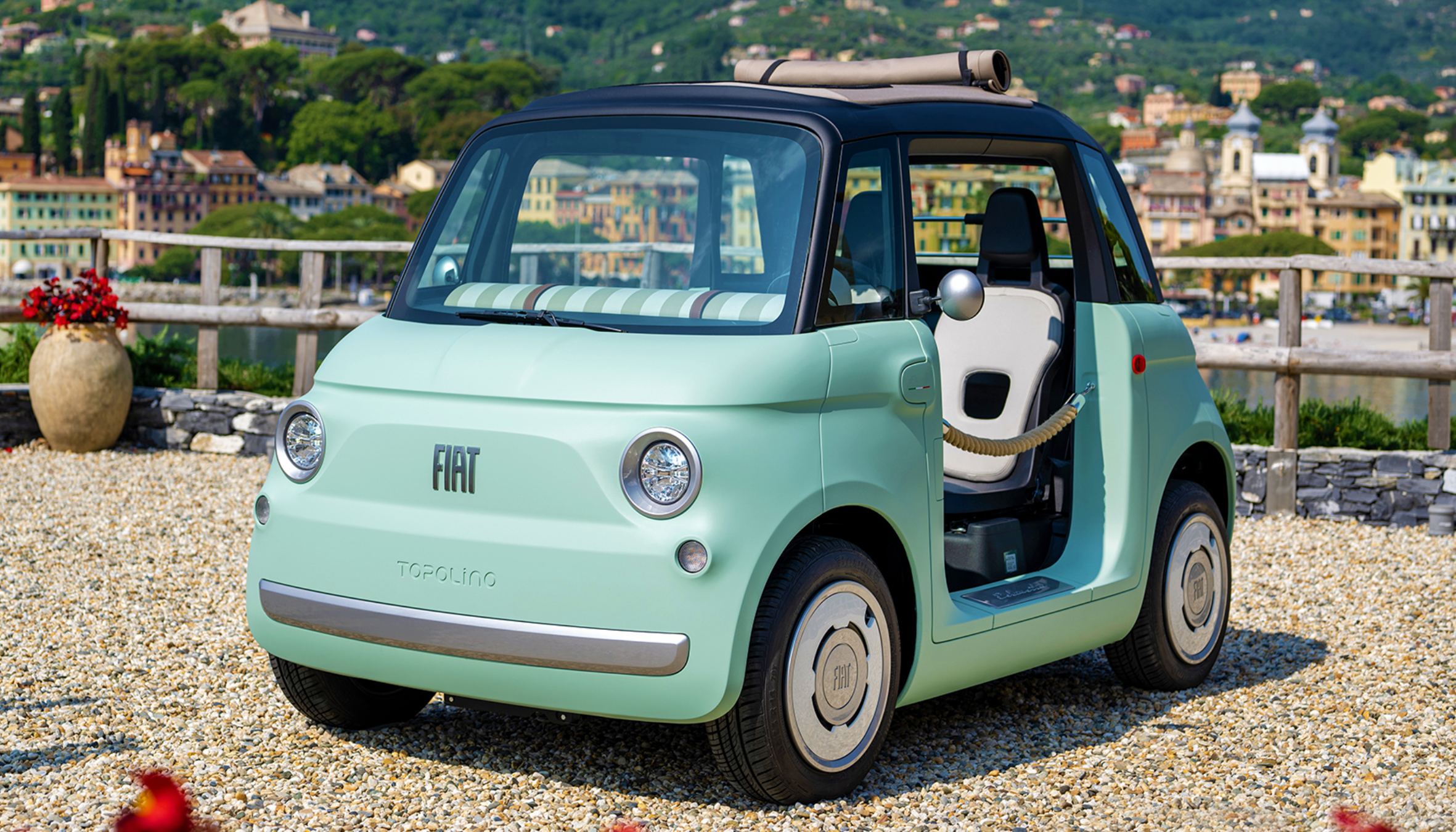
Now for something different. Like, really different. Remember the Citroen Ami? Well this is what happens when you take the electric French quadricycle and inject some Italian charisma. It’s also what happens when you open up the roof, paint it mint green and replace the doors with the ropes you might find around the private bit of a posh beach bar.
We admit it might not be entirely suitable for the UK, but it’s a huge dose of dolce vita nonetheless, and a demonstration of what EVs can be if you think outside the box. It promises 47 miles of range from its tiny 5.5 kWh battery, just 8 bhp, a top speed of 28 mph – and a set of stylish seat covers that can be used as beach towels. It’ll likely be priced at around £8,000.
Ford E-Transit Custom
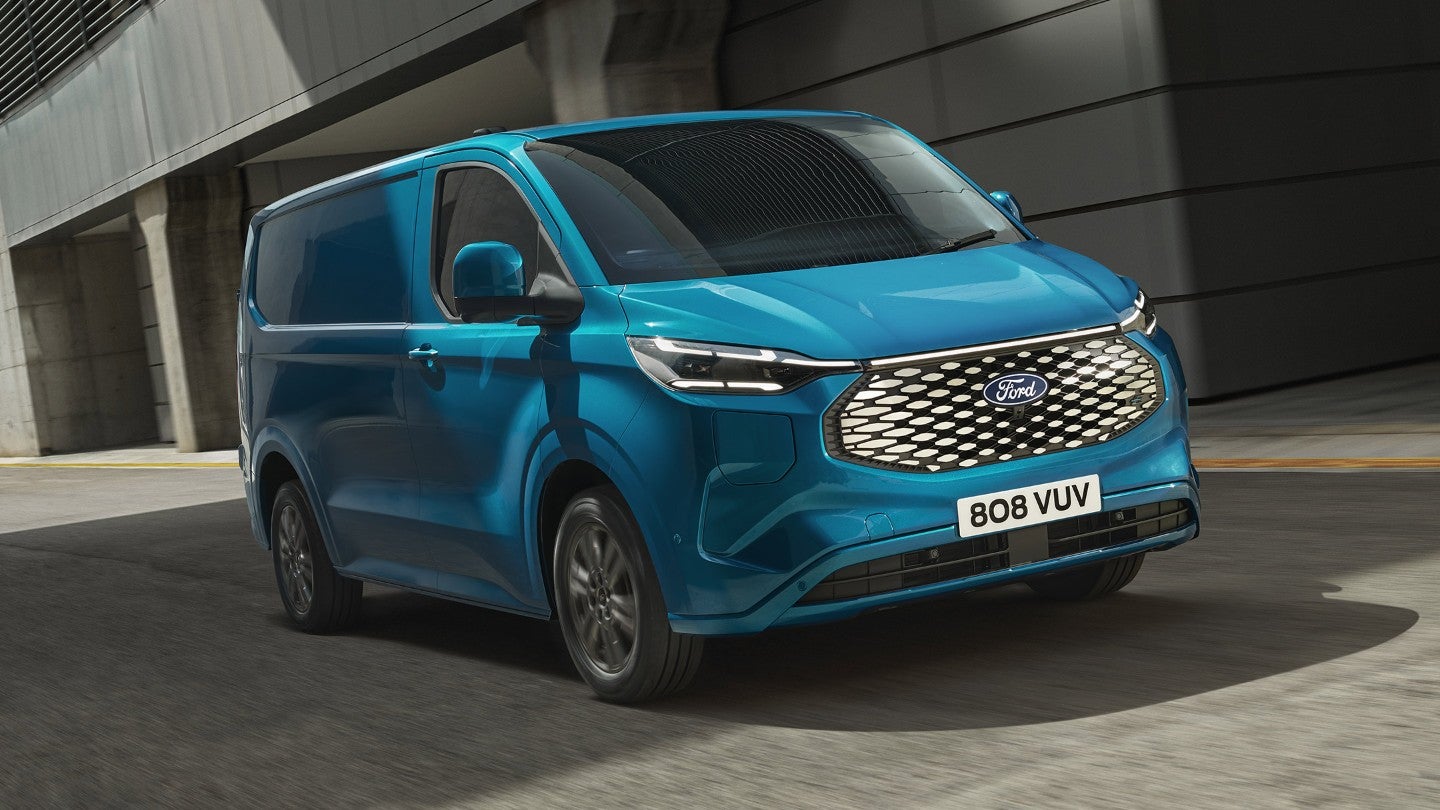
Often described as the backbone of Britain, and also the country’s best-selling commercial vehicle, the Ford Transit is going electric. It has a targeted range of 163 to 209 miles, a 2.3-tonne towing capability and a maximum gross payload of 1,088 kg, Ford says.
The van is also claimed to charge from 10 to 80 percent in 39 minutes (depending on the power of the charger used, of course), and it can deliver up to 2.3 kW of power to run power tools, lights, laptops and other devices. Other tech features include a 360-degree camera, 5G connectivity and a 13-inch touchscreen running Fords’ SYNC operating system. It’ll be priced from between £40,000 and £45,000 before VAT.
Hyundai Ioniq 9
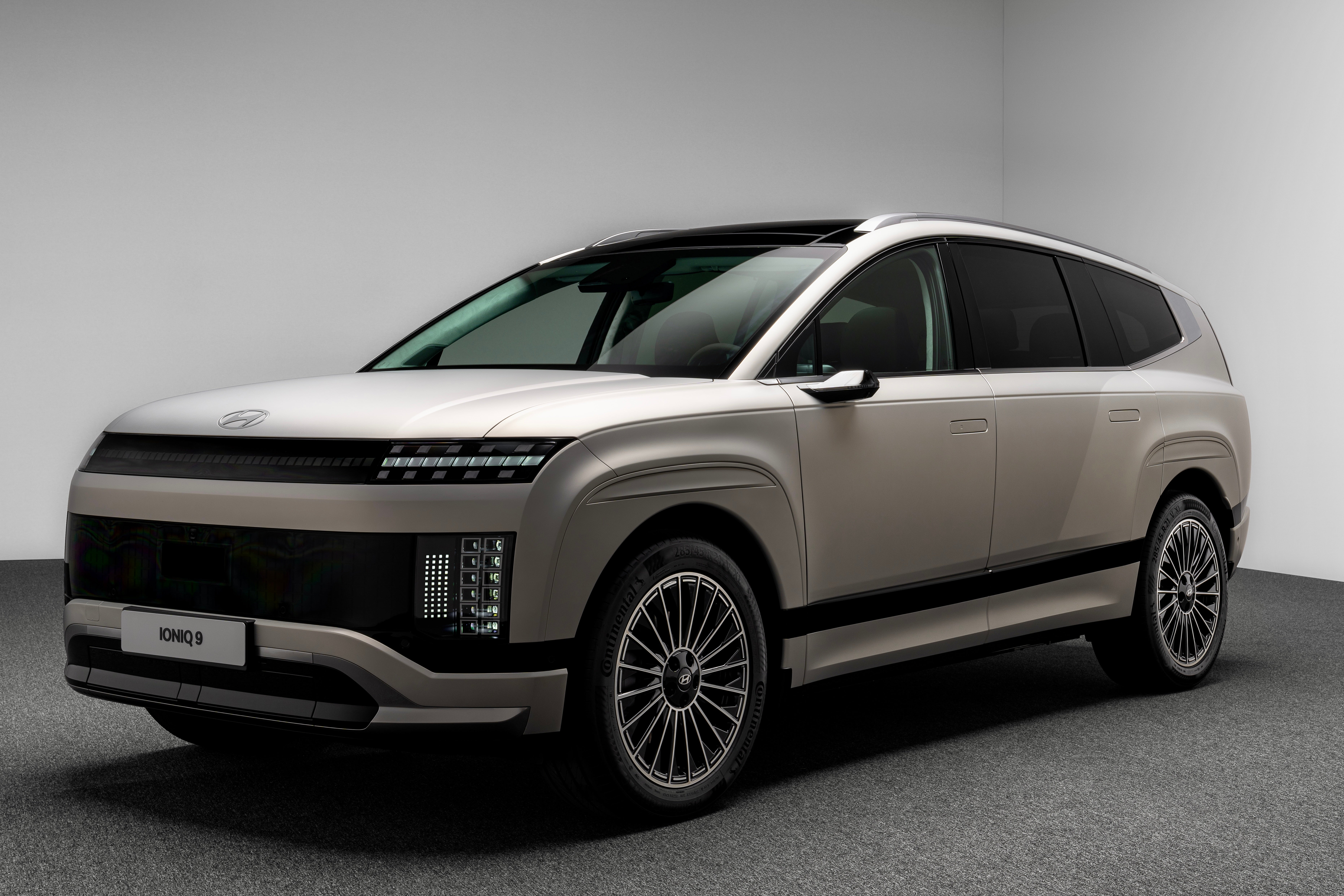
Hyundai announced the new seven-seat SUV in November, ahead of it going on sale in the UK later in 2025. Sharing its electric platform with the equally large Kia EV9, the Hyundai is expected to be priced from around £65,000.
It features seven full-size seats spread across three rows, while standout design touches include so-called Parametric Pixel LED lighting at the front and rear, and what Hyundai calls an “aerosthetic” design which sees smooth bodywork on the sides and a roofline that curves downwards towards the rear. This styling helps make the Hyundai look slightly more compact than the Kia EV9, despite actually being a touch larger.
As well as a seven-seat layout, a six-seat option is also available, with a pair of individual seats in the middle row that rotate, allowing passengers on the second and third row to face each other.
Jaguar
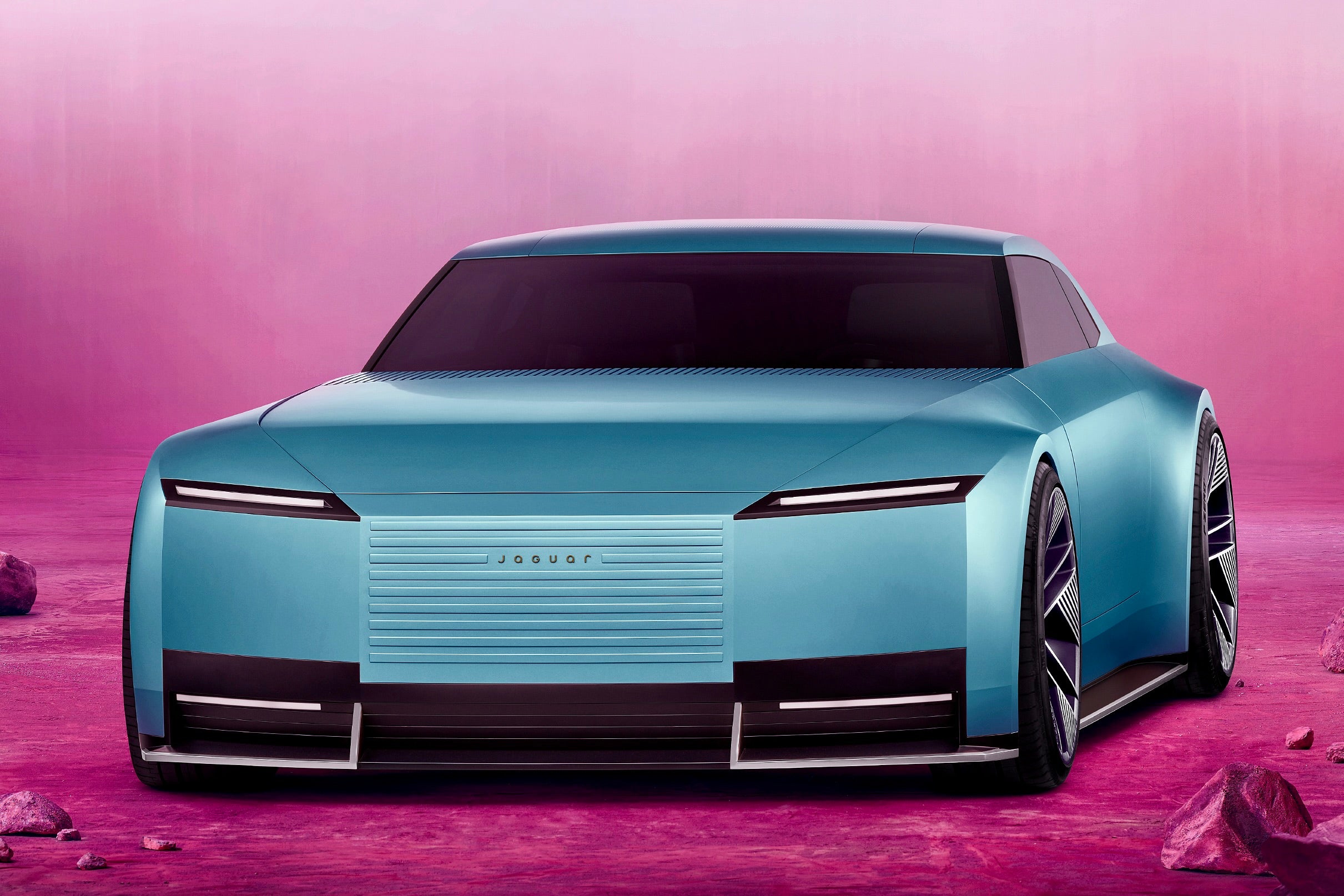
What’s going on at Jaguar? It’s a fair question to ask, given it’s about to stop producing all of its cars, including the electric I-Pace, which was way ahead of the curve when it arrived in 2017 but has barely been touched since.
The company is going for a clean-slate approach. It’ll axe everything it currently sells by the end of 2024, then produce nothing at all until deliveries of an all-new EV family begin in 2026. It’ll be like when Glastonbury has a fallow year, but with Jaguar working frantically behind the scenes to completely reinvent itself. Not just let some grass grow back.
This reinvention will include taking a big step up-market. Its first new EV is expected to be a circa-£100,000 four-door GT with over 400 miles of range, two motors and nearly 600 horsepower. All being well, this will be followed by an equally plush SUV and a bigger luxury saloon that Jag hopes will give Bentley sleepless nights. It’s a huge gamble for a British firm that has failed to keep pace with the success of its sibling brands Range Rover and Land Rover - and it all kicked off with the reveal of the dramatic Type 00 concept car in Miami in December.
Kia EV3
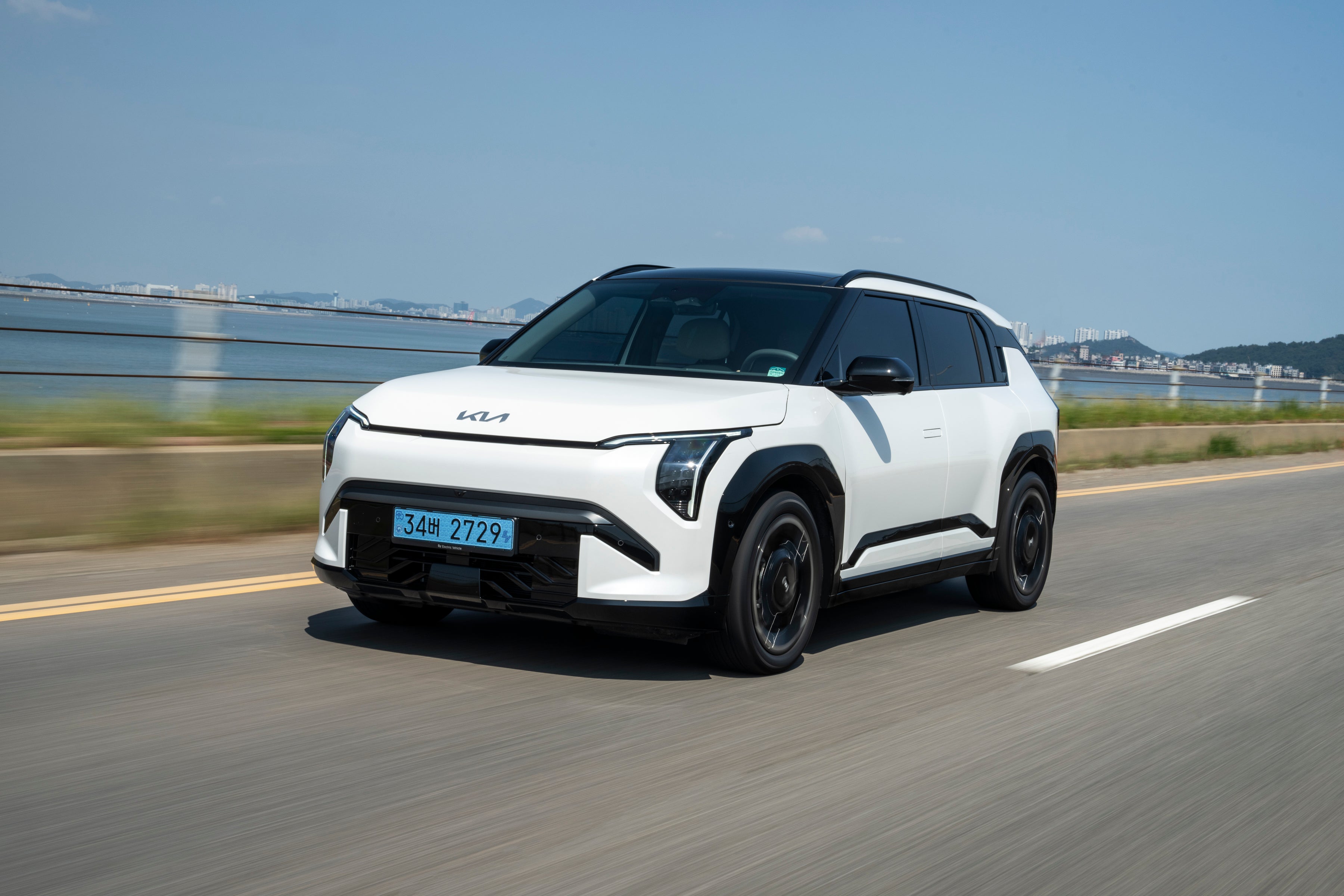
Kia sells some fantastic electric cars, so we have high expectations for the EV3. To go on sale later in 2024, the EV3 will sit below the massive EV9, mid-size EV6 and equally new EV5. It’ll use the same E-GMP electric platform that underpins other Kia, Hyundai and Genesis cars, which means the smaller EV will still benefit from an 800-volt system with rapid charging.
Kia says the finished car will look a lot like the concept it revealed in 2023, pictured above, with the promise of practicality and a spacious interior despite the compact dimensions. Range from the 81.4 kWh battery will be up to 372 miles, the company says, while the 0-62 mph time is 7.5 seconds and, more importantly in the real world, the EV3 will fill its battery from 10 to 80 percent in about 30 minutes. A lesser version will also be available, and is expected to be priced from just under £30,000. It’ll have a 58.3 kWh battery and a range of about 255 miles. Both variants are equipped with a single motor sending 201 bhp to the front wheels.
Lotus Emeya

A saloon sibling of the Lotus Eletre SUV, the Emeya is a Lotus built to take on the Porsche Taycan, Audi e-tron GT and likely whatever Jaguar has in store for us in 2026.
Priced from £94,950 to £129,950 for the flagship R variant, the Emeya promises a maximum range of 379 miles from its 102 kWh battery pack and a maximum charge rate of 350 kW. That makes it the fastest-charging production EV yet, and means it can fill its battery from 10 to 80 percent in 18 minutes. But, as always, that’ll only be possible when connected to an equally powerful charger.
Engineered and built in China, the Emeya will be among the quickest and most powerful four-door cars on sale, producing 905 bhp in R form and hitting 62 mph in 2.8 seconds. The entry-level Emeya and mid-range Emeya S are likely to produce closer to 600 bhp. Other features include a trick air suspension system that scans the road 1,000 times per second then adjusts accordingly, active aerodynamics, 5G connectivity and a 15.1-inch OLED dashboard display.
Maserati MC20 Folgore
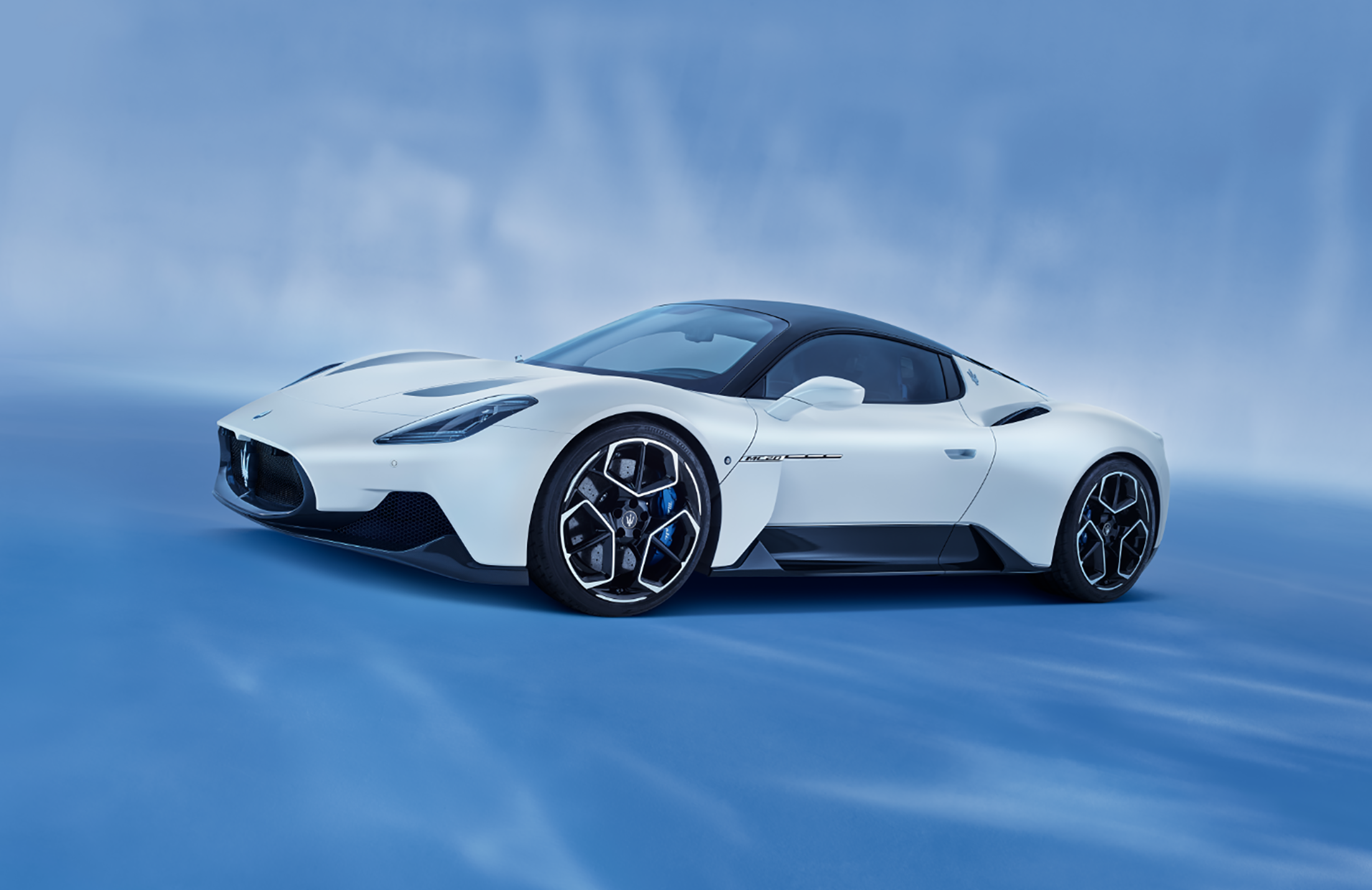
The electric supercar is a tough nut to crack. Some brands, like Rimac and Lotus, have aimed for the very top of the market and used electrification to produce monsters with 2,000 horsepower and price tags of £2,000,000. But what about everyone else? We’re still waiting to see what an all-electric Ferrari will look like, while McLaren isn’t saying anything just yet and Aston Martin simply doesn’t seem interested in electrification. It doesn’t even sell a hybrid.
But Maserati has shown interest in an EV supercar. It’ll be called the MC20 Folgore and, the Italian company says, it’ll arrive in 2025. We haven’t seen it yet, but the name alone means it’ll be a battery-powered version of the existing MC20 (pictured above), a two-seat supercar currently powered by a V6 engine. It is understood the electric version will use a similar three-motor setup to that of Maserati’s electric GranTurismo Folgore, and the company says it shouldn’t weigh too much more than the V6 version. The MC20 is one of our favourite supercars of the past few years, so we have high hopes for its electric sibling, which is expected some time in 2025.
MG Cyber GTS
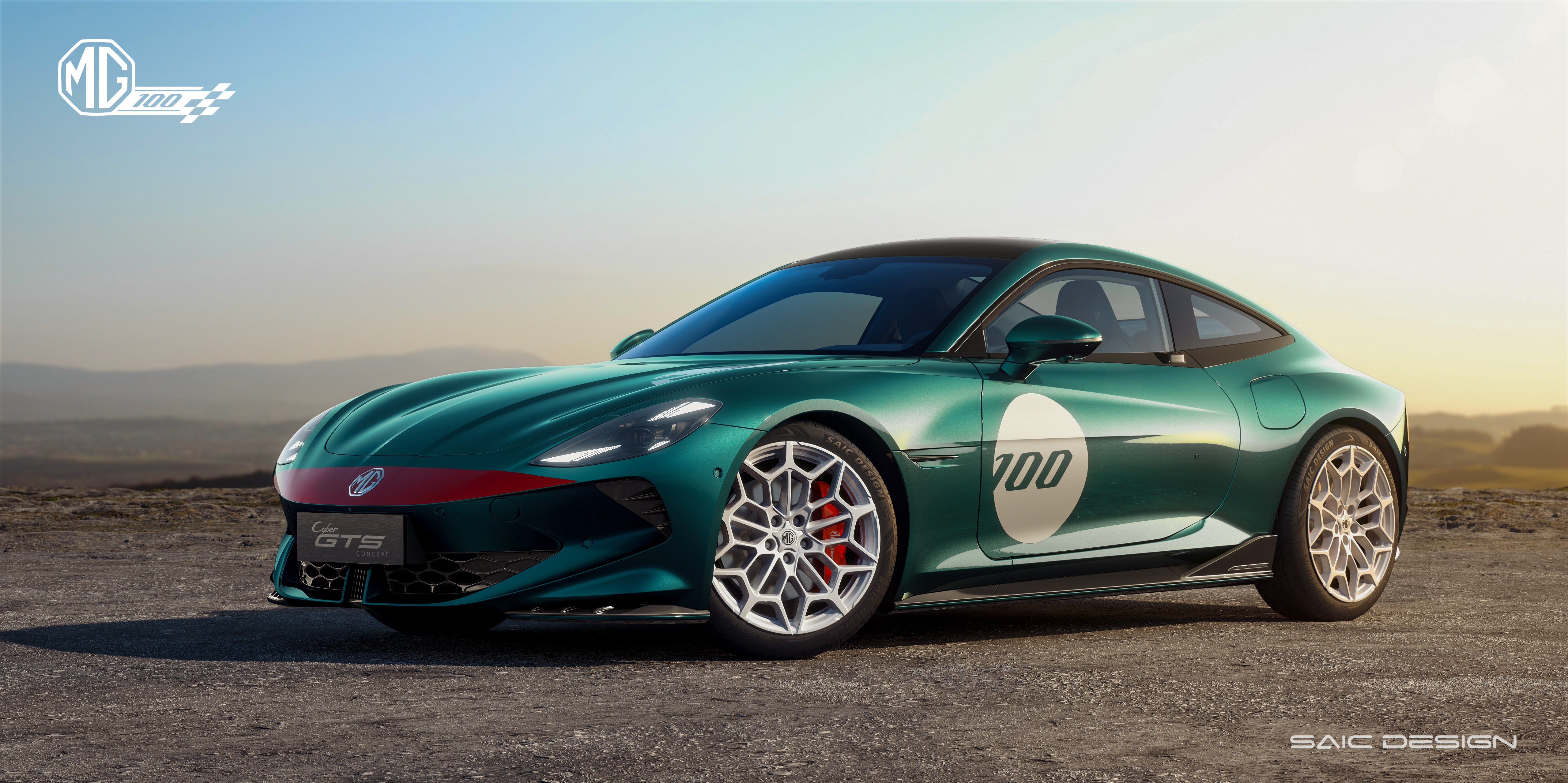
MG doesn’t just sell sensible electric cars for family duties and Uber shifts. It also sells the well-reviewed Cyberster, a stylish two-seat sports car with a fold-down roof and scissor-style doors.
And next up is the Cyber GTS, a hard-topped coupe sibling to the Cyberster. It was revealed as a concept to celebrate MG’s 100th birthday at the 2024 Goodwood Festival of Speed, and at the same show MG demonstrated a moving prototype – suggesting it’s serious about putting the GTS into production. It’s understood the car will be offered with similar single- and dual-motor options as the Cyberster, and that it could go into production as soon as 2025.
Mini Aceman
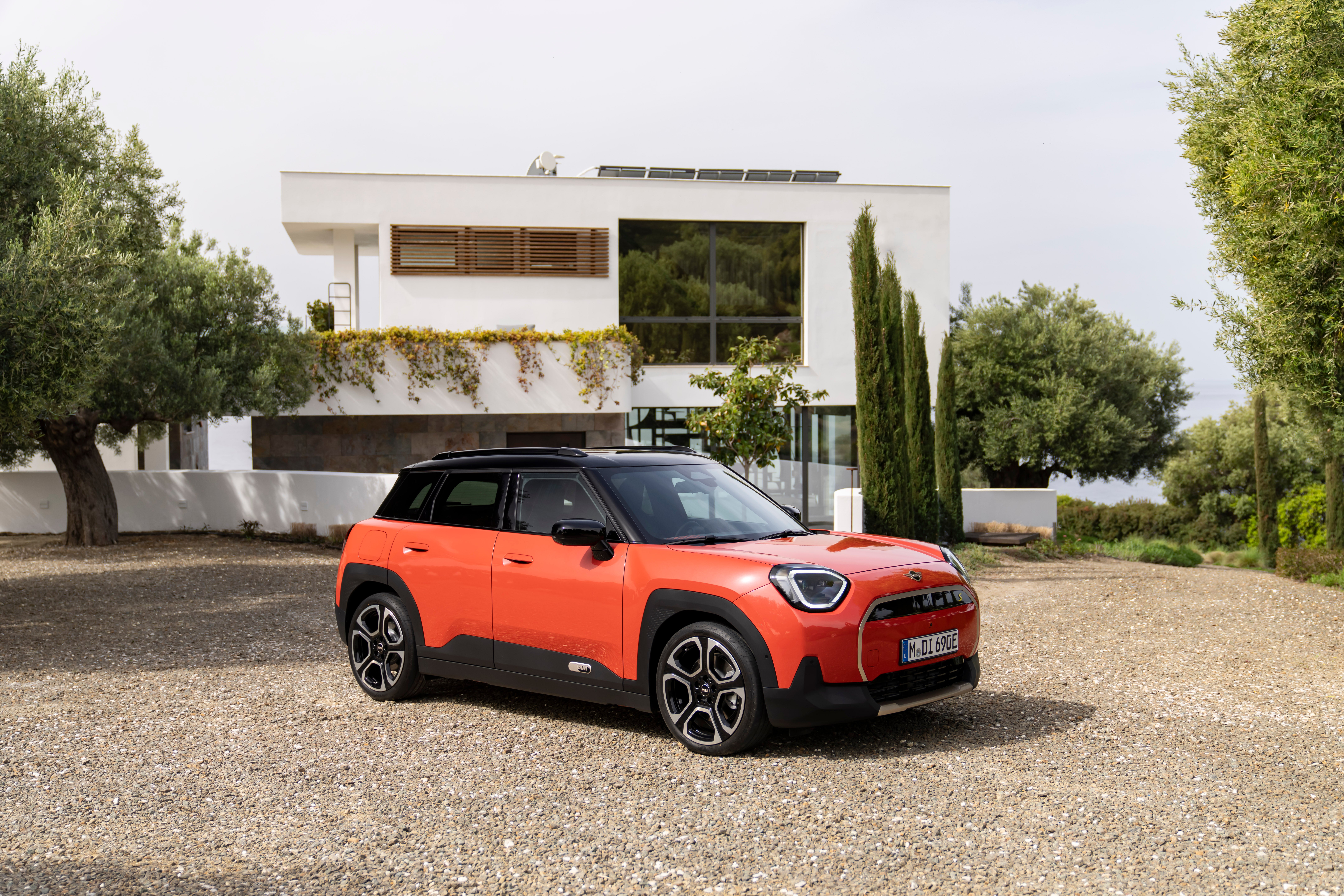
Arriving with customers in November, the Aceman is an all-new member of the Mini family. It’s an electric compact crossover that’s designed to fit between the three-door Mini Cooper hatchback and the larger Countryman SUV. It’s also the first Mini to be offered exclusively as an EV, since the Cooper and Countryman can both still be bought with engines.
Priced from £31,800 and with up to 252 miles of range, the Aceman finds itself in a crowded segment of the EV market, with rivals like the Jeep Avenger, Alfa Romeo Junior, Renault Megane E-Tech and Kia EV2 all vying for mass-market attention. Two battery options are available, with capacities of 42.5 kWh (good for a claimed 192 miles) and 54.2 kWh. Power outputs are 181 bhp and 215 bhp respectively, with 0-62 mph times of 7.9 and 7.1 seconds.
Polestar 5

Polestar plans to launch a new car called the 5 in 2025. This will be the production version of a concept called the Precept, which Polestar revealed back in 2020. A five-seat, four-door electric saloon car, the Polestar 5 will be built on the Swedish brand’s first bespoke EV platform and it’ll be powered by an 800-volt electrical architecture – which should mean much faster charge speeds than any other Polestar to date. The company says the 5 will produce up to 650 kW (885 bhp) and 900 Nm of torque. The Polestar 5 is expected to go up against the Porsche Taycan and Mercedes-Benz EQS. The Polestar 5 was seen in prototype form at the 2023 Goodwood festival of Speed (pictured above).
Polestar 6

To be built on a modified version of the Polestar 5’s platform, the Polestar 6 is a convertible, high-performance electric sports car due on sale in 2026. Polestar says it will have the same performance figures as the Polestar 5 – meaning 800 volts, 884 bhp and 900 Nm of torque – and a 2+2 interior with small rear seats. We don’t know how much it will cost yet, but Polestar says the first 500 examples, called the LA Concept edition and finished in pale metallic blue – have already been allocated to customers who each paid a $25,000 deposit.
Porsche Boxster & Cayman
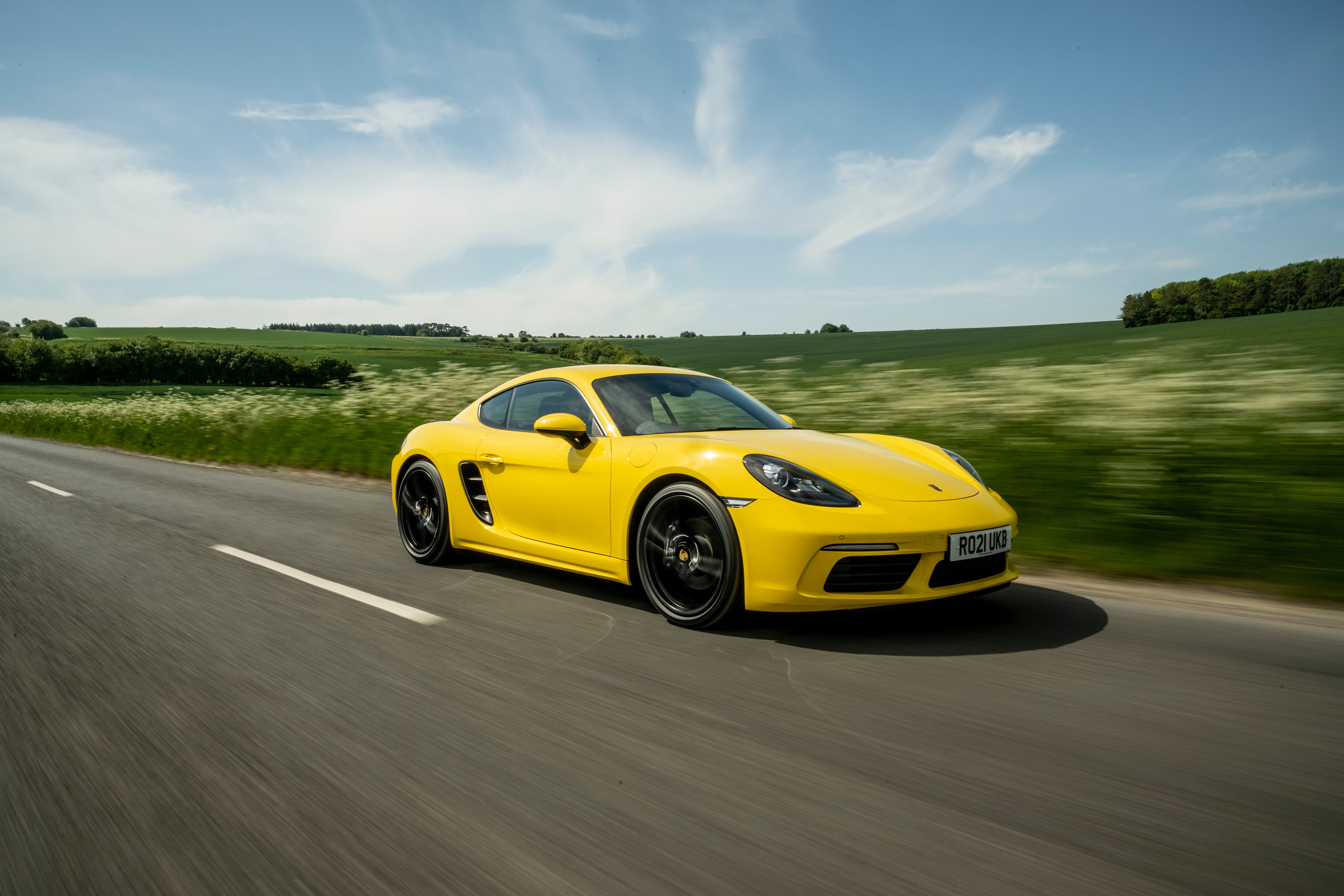
Just as its new Macan SUV is all-electric, Porsche will soon replace its best-selling Boxster and Cayman sports cars, pictured above, with a pair of battery-powered successors. Likely to be some of the most talked-about EVs of the year, the pair of plug-in Porsches were spotted during the winter testing season in early 2024, and are expected to be formally announced in 2025.
Not much is known about the cars’ performance or range just yet, but they are sure to be quicker and more powerful than the current generation of petrol-powered Boxster and Cayman – but with big batteries the new duo will almost certainly be heavier too. As with the Taycan, we can expect the new Porsches to pack some seriously fast charging speeds, thanks to Porsche’s 800-volt electrical architecture.
Range Rover Electric

The first all-electric Range Rover will arrive later in 2024 – and, from what JLR has already shown of it, testing in the Arctic Circle, it’ll look almost identical to the current model. That of course means a simple, modern, full-size luxury SUV, but little else is known for now.
JLR has previously said it’ll have an 800-volt charging architecture. That’s double the voltage of most other EVs, and means the Range Rover Electric should have a maximum charge rate of over 250 kW. It is also sure to have the same go-anywhere ability of its siblings, including being able to wade through 850 mm of water. Prices haven’t been announced yet, but it’s likely to start comfortably above the £104,000 commanded by the current model.
Range Rover Sport Electric

Due in 2025, an electric version of the Range Rover Sport will sit below the full-size Range Rover Electric, pictured above. Like its bigger brother, it is also expected to look remarkably similar to the current model, making it slightly smaller than the flagship and a little more affordable too. It will go up against the Lotus Eletre and an upcoming electric Porsche Cayenne.
Renault 5 E-Tech

Renault’s going retro with its next EV. The new 5 is a five-door hatchback that harks back to the original 5, which was in production through the 1970s, 80s and 90s. To be priced from around £23,000, the new car retains much of the original boxy aesthetic, plus an interior that blends modern digital displays and infotainment with 1970s colours and textures. There’s even a woven wicker baguette holder for your morning trips to the bakery. No really, there is.
Under the body you’ll find a 52 kWh battery pack sending 134 bhp to the front wheels and promising a range of up to 248 miles. Renault says the battery will charge from 15 to 80 percent in 30 minutes (if you use the right charger). Tech features include integrated navigation from Waze, plus access to Amazon Music, Google Assistant and more apps from the Play store.
Tesla Roadster
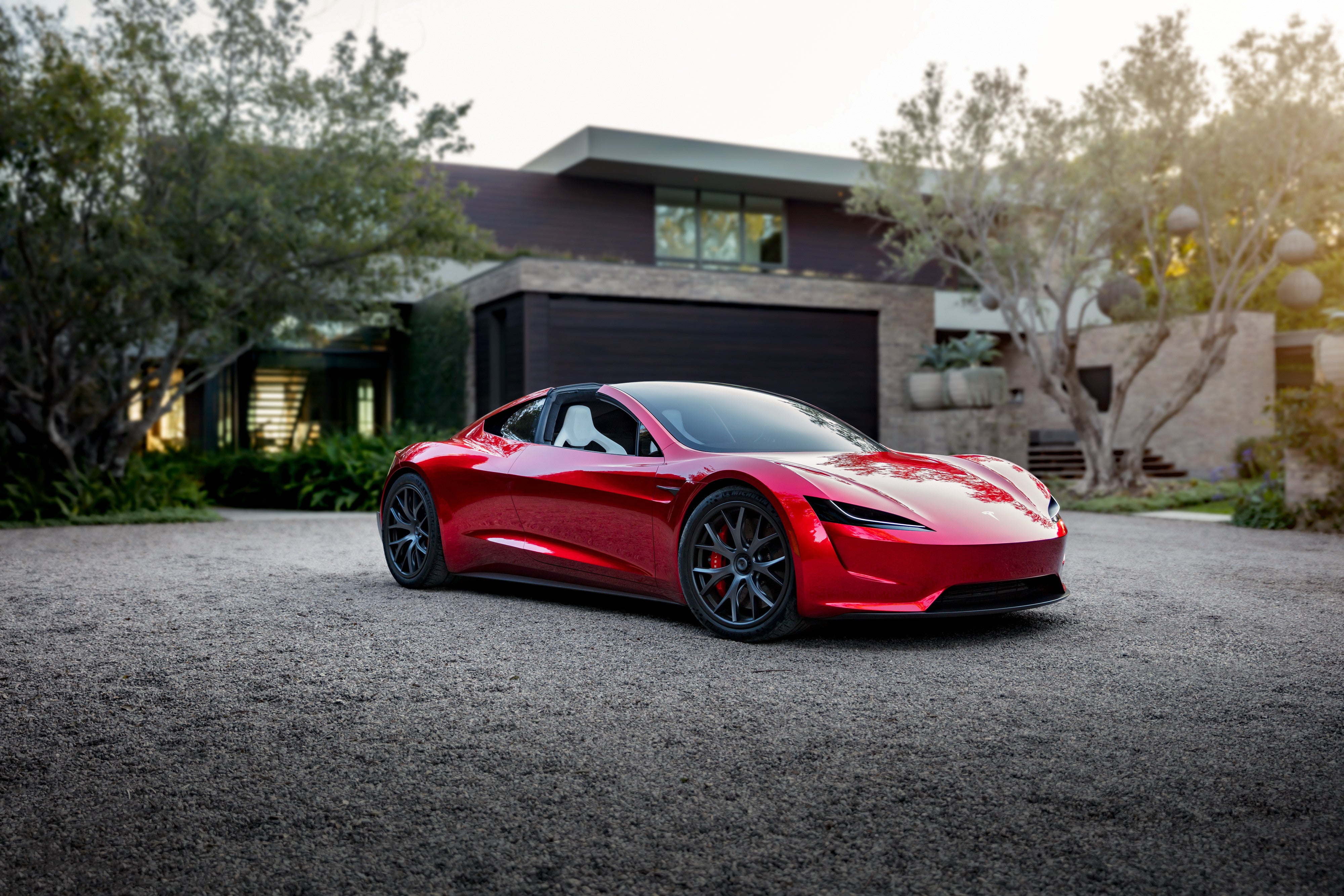
Revealed all the way back in 2017 and intended to go into production in 2020, the second-generation Tesla Roadster is seriously delayed. But, with a bit of luck, it might finally arrive in 2026.
By then, customers who paid a $50,000 deposit (or coughed up the full $250,000 for the limited-edition Founders variant) will have been waiting for almost an entire decade from when it was first unveiled by Elon Musk. The Tesla boss has since said how the Roadster will use rocket technology borrowed from SpaceX to give the electric supercar otherworldly performance. We’re yet to see any actual proof of that, however, and no prototypes have been spotted tested in public.
Tesla Model Q
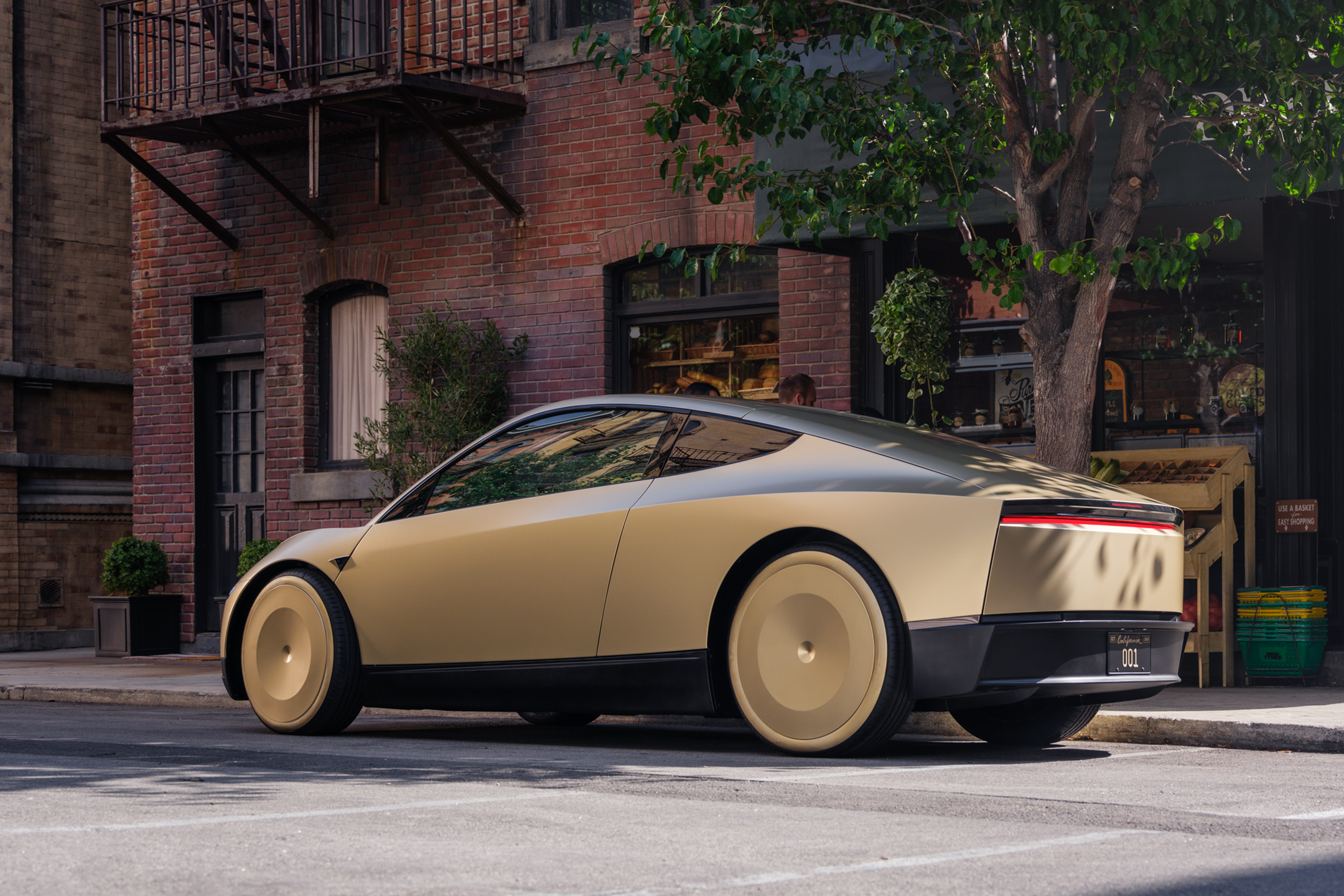
Surprise! After Elon Musk suggested Tesla was no longer working on a compact EV dubbed the Model 2, the company is now believed to be working on a small car called the Model Q. Reports from Chinese media claim the Model Q was discussed during an investor meeting with Deutsche Bank in December 2024, attended by Tesla’s head of investor relations.
It is claimed the Model Q’s price was described as starting at “less than $30,000 after subsidies.” That’s about £23,500 in the UK, and well below the £39,990 starting price of the Tesla Model 3. The latest rumours claim the Tesla Model Q, known internally as Redwood, will come with two battery size options – 53 kWh and 75 kWh – with a maximum claimed range of over 300 miles, and it’ll arrive in the first half of 2025.
Tesla Model Y
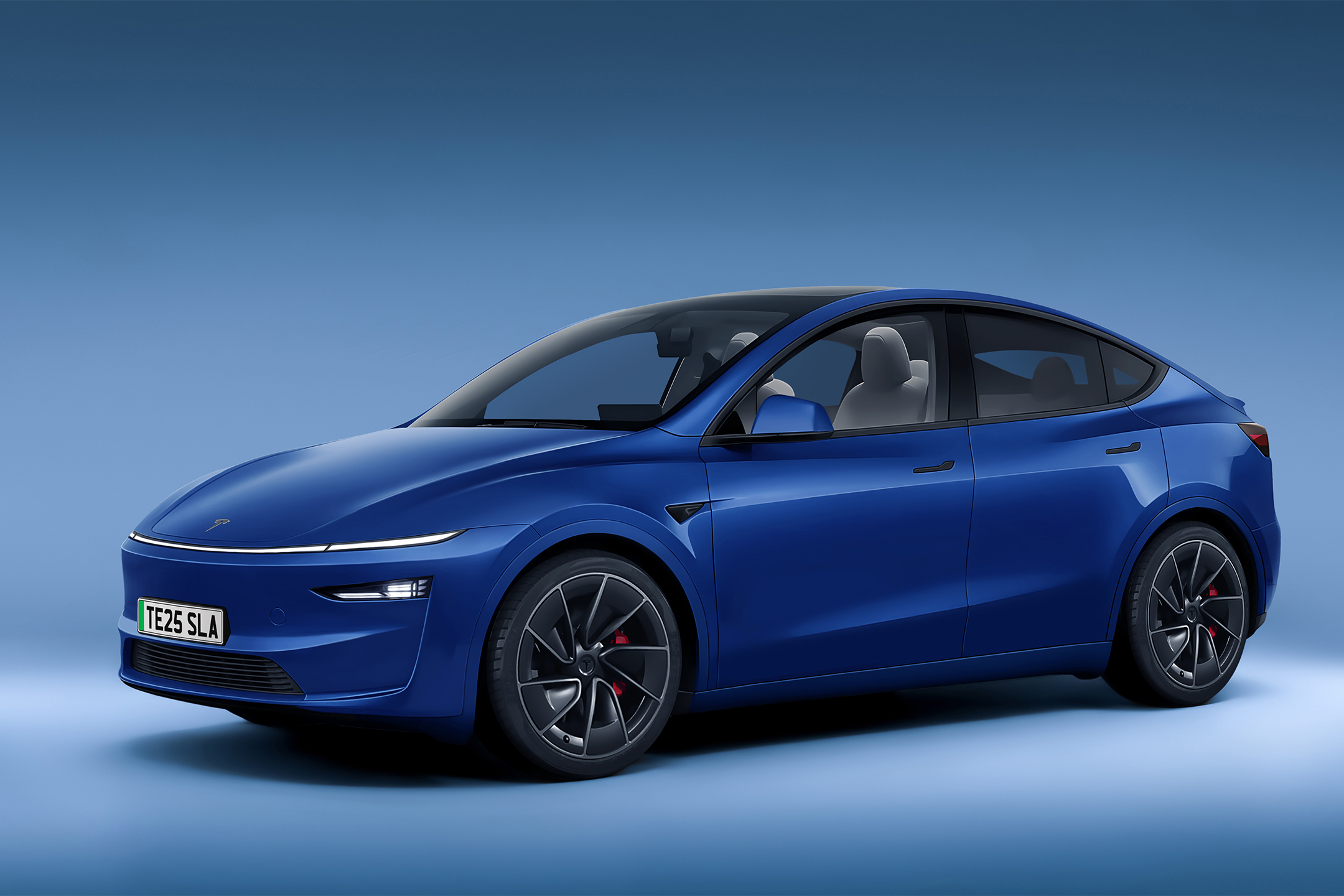
More of a refresh than a whole new car, an updated version of the hugely popular Tesla Model Y is due to launch in early-2025. Known internally as Juniper, the new Model Y will gain a redesigned front end to match the recently updated Tesla Model 3.
The interior will also be updated to mirror that of the Model 3, meaning an even more paired-back design than the current Model Y, with the wiper and indicator stalks removed in favour of buttons on the steering wheel.
Even greater efficiency is also expected, giving the Model Y more range – perhaps as much as 430 miles for the Long Range Rear-Wheel-Drive variant – while the Performance model could pack even more power, but won’t arrive until later in 2025.
Volkswagen ID.2
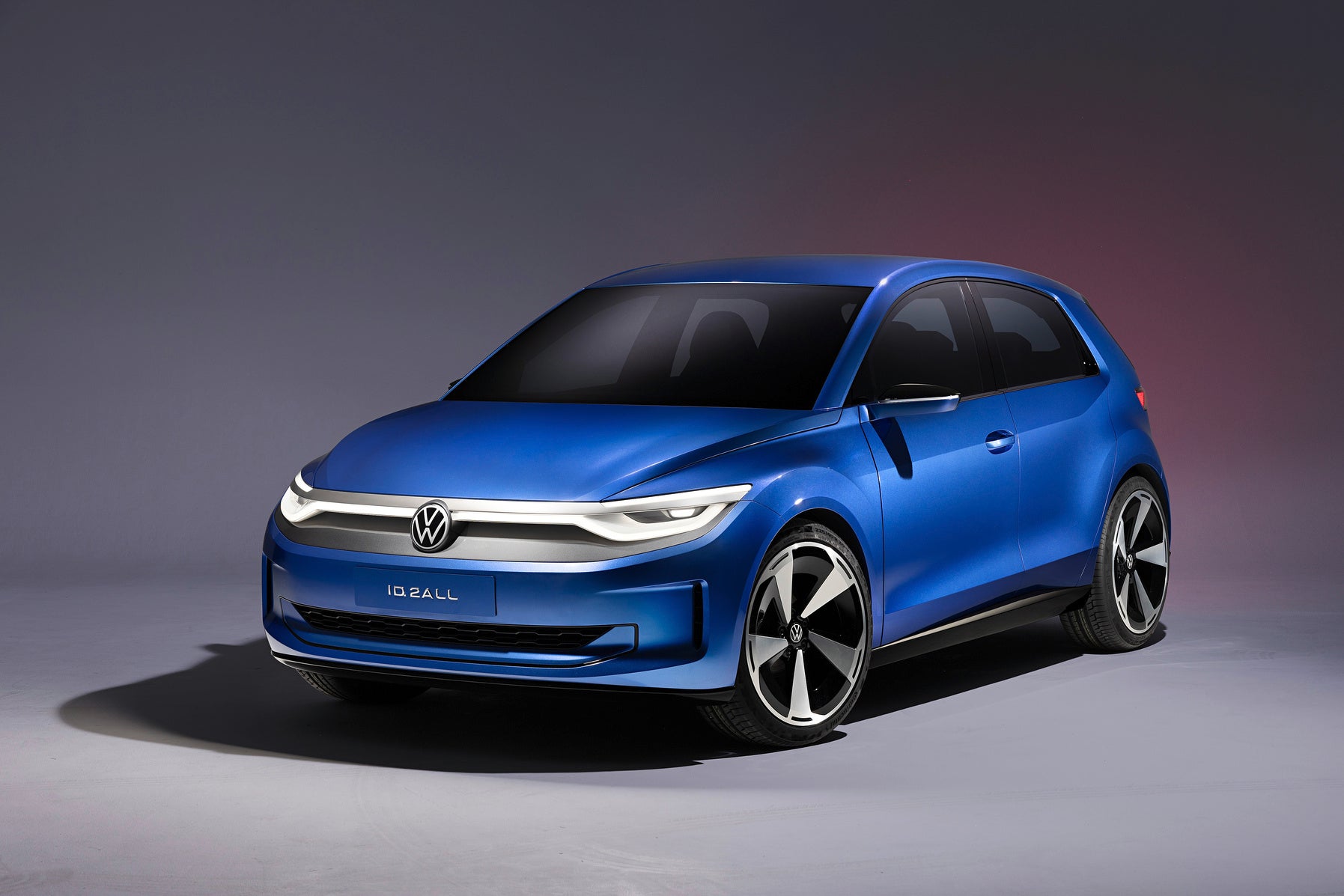
Due to go on sale in 2025, the Volkswagen ID2all concept revealed in 2023 is expected to become the VW ID.2. Sitting below the ID.3 and with the potential to act as a reborn Golf for the EV era, the ID.2 family is expected to include Volkswagen’s first electric GTI, itself previewed by the ID.2 GTI concept and due by 2027.
Price will be a key factor here, with Volkswagen itself saying the new car will start from less than €25,000 (£20,800). VW says the small car will have a range of up to 280 miles, and a single electric motor on the front axle will produce 166 kW (222 hp). We just hope VW has righted the wrongs of the ID.3’s interior ergonomics and tech, while a souped-up GTI variant promises to inject some fun into the ID lineup.







